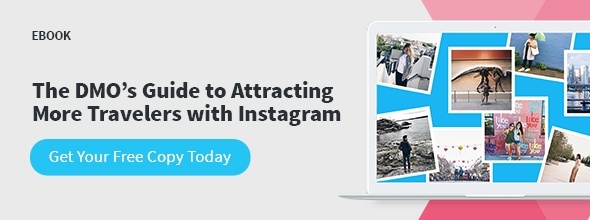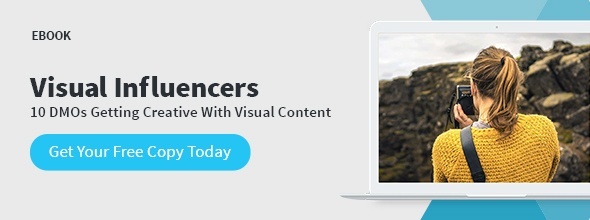Digital marketing and engagement for museums is an art form in and of itself.
Though there are plenty of creative ways for museums and galleries to grow their audience online, doing so takes dedication, patience — and a willingness to learn from the best!
Keeping tabs on industry influencers can provide the right combination of information and inspiration needed to elevate your own digital marketing strategy.
So whether you want to catch up on everything related to #musesocial or learn how to use Snapchat to get millennials interested in your exhibits, check out these museum digital engagement experts on Twitter:
As the Director of Audience Engagement at the Worcester Art Museum in Massachusetts, Adam Rozan is committed to creating amazing visitor experiences that inspire curiosity and learning. He uses Twitter as a platform to share his interests in promoting museums and art through social media.
A self-proclaimed engagement pro, Adam takes it upon himself to tweet at individuals who might be interested in upcoming exhibits, engaging with members of the community on a personal level.
https://twitter.com/adamrozan/status/796848449698336768
Mar is the creator of 52museums, an Instagram account that gets taken over by a different museum every week. She knows how to harness the power of social media marketing for museums, galleries, and heritage venues.
As the founder of Museomix UK, Mar also runs @TeensInMuseums, @CultureThemes, @AskACurator and @MuseumSelfieDay on Twitter. When she’s not encouraging her followers to share museum selfies, she tweets about technology, theater, art, London, and updates from museums around the world.
Andrea Carson Baker | @Carzoo
Passionate about contemporary Canadian art and design, Toronto-based writer Andrea Carson Baker shares her knowledge on her widely-read blog, View on Canadian Art. Andrea’s Twitter page is a mix of visual content from local exhibits, commentary on Canadian culture, art, and film.
Her writing and frequent tweets reflect her belief in the political nature of art and her perspective on news that affects cultural institutions.
JiaJia Fei is currently the Director of Digital for the Jewish Museum in New York and previously worked her digital marketing magic for the Guggenheim Museum. She uses social media to make museums more accessible to global audiences — and especially millennials.
In between lecturing on digital content strategy and being interviewed by the New York Times, JiaJia tweets content related to art, technology, and culture — often combining stunning museum visuals with emojis and humor.
The Manager of Online Engagement at George Eastman Museum, Kate Meyers Emery is passionate about cultural heritage and developing marketing strategies for museums. She uses her Twitter page to spread information about specific collections and pieces, both through retweets and her own comments.
Though Kate often tweets about exhibits and workshops at the Eastman Museum, she also uses the platform to engage with other museums, artists, and influencers.
Laura Crossley is a cultural consultant who helps organizations grow and diversify their audiences. She’s also a Ph.D. student at the University of Leicester, where she’s researching how England’s financial cuts will impact community engagement for British museums and how museums can adapt to budget changes.
True to her desire to get more people involved in museum culture, Laura tweets about industry functions, workshops, volunteer openings, and collections throughout the UK.
Russell Dornan is in charge of digital engagement for Wellcome Collection, a London-based museum that hosts historic exhibits and collections that explore medicine, life, and art through the ages. Always thinking about how museums can engage their visitors better, he found a way to make visitor reactions a part of some exhibits.
Russell tweets about museum workshops, collections, photography, and community engagement.
As the Digital Engagement Coordinator of the Royal Ontario Museum (ROM) and Community Manager for the Museum Computer Network (MCN), Ryan is a well-respected thought leader in connecting with museum visitors on social media. He focuses on giving real value to the ROM’s social audiences and emphasizes the importance of maintaining consistent messaging across all social platforms.
Lately, Ryan’s Twitter feed has been bursting with updates from the latest MCN conference in New Orleans, but he also tweets social media marketing tips and encourages museums to inject personality into their online presence.
While some museums are reluctant to add Snapchat to their engagement strategy, Lucy Redoglia of the Los Angeles County Museum of Art (LACMA) has Snapchatting down to an art. As the museum’s Social Media Manager, Lucy knows that social media holds the key to inspiring the younger generation to explore museums and appreciate art.
Follow her on Twitter for insights into LACMA’s Snapchat success, along with tweets about art and culture in LA.
As Digital Content Strategist for the Blanton Museum of Art at the University of Texas, Alie Cline strives to maintain an open dialogue between the museum and its community of onsite visitors and followers. She’s also the founder of Cave to Canvas, a website featuring AP art history crash courses for high school students.
Follow Alie on Twitter for plenty of #musesocial content and conversations about how museums are making art exhibits more accessible to the public at large.
https://twitter.com/aliecline/status/794269940362555392
From Washington, D.C., Meagan Estep is the Social Media Manager at the National Gallery of Art and an adjunct professor at the Corcoran School of the Arts and Design. She’s a champion of the #slowlooking movement and challenges museum guests to be mindful of their encounters with art.
She tweets about museum marketing, inspiring gallery visitors to connect with artwork, and her own experiences at museums.
Lexie Buchanan is the new Social Media Officer at the Art Gallery of Ontario, and she’s been part of Ontario’s museum scene for years. She’s also been the Digital Engagement Specialist at the Royal Ontario Museum and the first Social Media Officer at the National Gallery of Canada – so she knows her stuff when it comes to social media and museums.
Lexie uses Twitter to discuss local art exhibits, Toronto cultural events, digital marketing strategies, and influential Canadian artists and galleries.
Lori Byrd-McDevitt is curious about how museums can leverage user-generated content in their digital marketing. She believes the public’s experience with art can be used to create more opportunities to connect with followers online.
As the Digital Content Manager at the Children’s Museum of Indianapolis, Lori shares tidbits of her human-centered content strategy, tips for museum blog managers, and her thoughts on participatory culture and open authority in museums.
https://twitter.com/LoriLeeByrd/status/794570526677204992
Carolyn Royston | @caro_ft
Not only is Carolyn Royston the Digital Director at the Isabella Stewart Gardner Museum in Boston, but she’s also the President of the MCN. A digital marketing powerhouse, she acts as a consultant for museums and cultural organizations on how to use digital to reach larger audiences.
Check out Carolyn’s Twitter feed for ideas on improving museum leadership, culture, and management, as well as tips for using social media to get more people interested in the arts.
Lanae Spruce is a museum digital professional passionate about the links between history, race, technology, museums, and social justice. She believes museums should show diverse historical experiences and encourage people to tell their own stories.
Lanae is currently a Digital Engagement Specialist for the Smithsonian National Museum of African American History and Culture in Washington, D.C.
Follow her on Twitter to find out how cultural institutions can become more inclusive, accessible, and empowering for everyone in their communities.
Amy Fox understands the importance of tone when it comes to storytelling and forging connections with audiences across different platforms. As the Social Media Content Manager for the Smithsonian American Art Museum, she focuses on boosting web engagement and educating museum visitors about American art, culture, and history.
Amy tweets about digital strategy, museum storytelling, and marketing best practices.
As the Marketing Manager at the Guggenheim Museum in New York City, Essie Lash focuses on projects aimed at growing, educating, and inspiring museum audiences. She’s interested in finding new ways to connect with guests, both onsite during their visit and online through social media.
You’ll often find Essie tweeting and retweeting thoughts on how museums can leverage social media, technology, and data to create better visitor experiences.
Although not technically an individual, honorary mention goes to the Association of Art Museum Directors! This account tweets a diverse collection of museum and community news, leadership advice, tools for museum professionals, and social media guidance for museums and galleries.
Update: Community Recommendations
We received some great recommendations of more people to add to this list! We’re adding them below.
Registrar at the New York Historical Society.
Third-Party Partnerships Producer in the Digital Department at The Met.
Development Consultant at the National Museum of Denmark.
Senior Advisor, New Media at the Nordic Museum.
Marie-Hélène Raymond | @mhraymond
Web Editor and Community Manager at Musée national des beaux-arts du Québec.
Cultural Institute Coordinator at Google.
Creator of @TheMuseumChat.
Cultural Mediator at Musée d’Angers.
Digital Communications at Le Centre des monuments nationaux.
Have a reco? Tweet us @CrowdRiff.
Want digital marketing tips sent straight to your inbox? Subscribe to our newsletter to get the latest scoop on social media marketing, UGC, and visual influence.






































